Name James Hampton | Role Artist | |
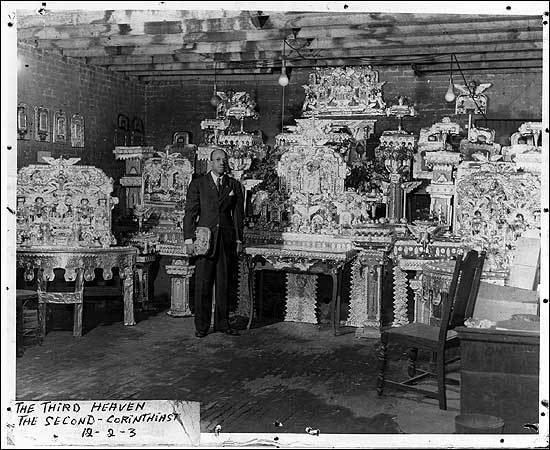 | ||
Born April 8, 1909 (age 55), Elloree, South Carolina, U.S. Died November 4, 1964 (aged 55) Washington, D.C., U.S. Similar Martín Ramírez, Simon Rodia, Paul Laffoley | ||
James Hampton (April 8, 1909–November 4, 1964) was an African-American janitor who secretly built a large assemblage of religious art from scavenged materials, and is considered an outsider artist.
Contents
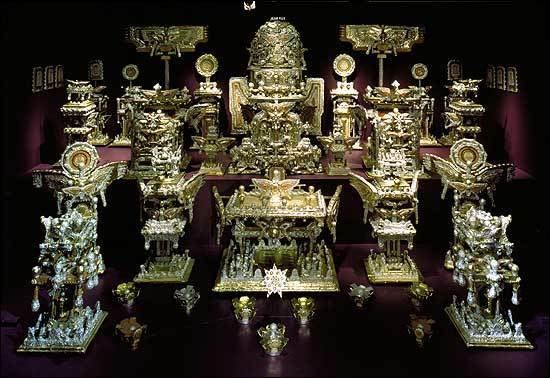
Early life

James Hampton was born in Elloree, South Carolina, in 1909. His father was a gospel singer and a traveling Baptist preacher. In 1928, Hampton left for Washington, DC, to join his elder brother Lee, where they shared an apartment. James Hampton worked as a short-order cook until 1942 when he was drafted into United States Army Air Forces. He served as a carpenter with the noncombatant 385th Aviation Squadron around the Pacific theatre. He was honorably discharged in 1945 and returned to Washington, DC.
Work

In 1946, Hampton became a night janitor with the General Services Administration. His brother Lee died in 1948.

In 1950, he rented a garage in northwest Washington. A month after Hampton's death in 1964, Meyer Wertlieb, owner of the garage, came to find out why the rent had not been paid. He knew that Hampton had been building something in the garage. When he opened the door, he found a room filled with many symmetrical, glittering objects surrounding a central throne. For 14 years, Hampton had been building a throne out of various old materials like aluminum and gold foil, old furniture, various pieces of cardboard, old light bulbs, shards of mirror and old desk blotters. He had pinned it together with tacks, glue, pins and tape.
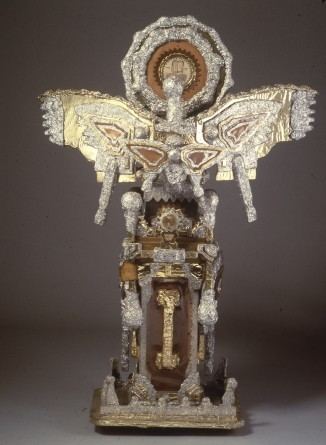
It is unknown whether Hampton considered himself an artist. Hampton's work would be an example of outsider or naïve art—art made by people who are self-taught, who have not studied art techniques, art history, or art theory.

The text The Throne of the Third Heaven of the Nations' Millennium General Assembly was written on the objects in Hampton's handwriting. He had emblazoned the words Fear Not above the central throne. The complete work consists of a total of 180 objects, many of them inscribed with words from the Book of Revelation. The objects on the right side of the central throne appear to refer to the New Testament; those on the left side, to the Old Testament.
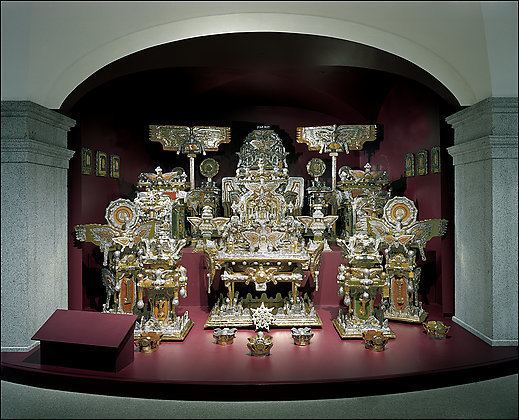
Hampton had also kept a 108-page loose-leaf notebook titled St James: The Book of the 7 Dispensation. Most of the text had been written in an unknown script that remains undeciphered. The text is available online and has been the subject of research.
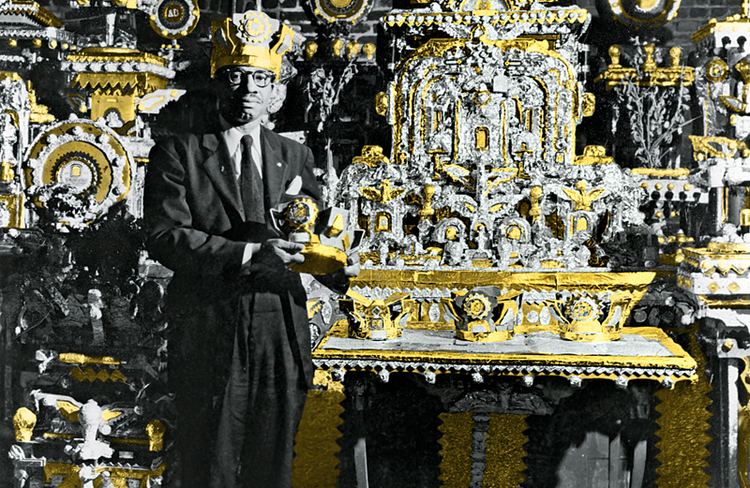
Some of this text, however, had been accompanied by notes in English. In Hampton's writing, for example, he used the title "Director, Special Projects for the State of Eternity" and ended each page with the word "Revelation". Hampton had also written texts, some of which refer to religious visions, on various pieces of paper and cardboard and on a few pages in each of seven other notebooks.
Hampton was somewhat reclusive. He had few close friends and spent much of his personal time working on his shrine. He was quite humble but often referred to himself as "St James". Hampton attended various churches in Washington and expressed an interest in finding a "holy woman" to assist with his life's work. Even so, he never married. Apart from these and some other details, not much is known about Hampton's life.
Hampton had kept his project secret from most of his friends and family. In fact, his relatives first heard about it when his sister came to claim his body. The extraordinary story of this secretive artist finally became public in the December 15, 1964, issue of the Washington Post. In 1970, Hampton's work was donated anonymously to the Smithsonian American Art Museum, where it often is on display.
Death
Hampton died of stomach cancer on November 4, 1964, at the Veteran's Hospital in Washington, DC.
In popular culture
In 2015, author Shelley Pearsall published a young adult novel, The Seventh Most Important Thing, which put the artwork and the artist in a fictional context, imagining a meeting between Hampton and a troubled thirteen-year-old boy. The author says she was inspired by the fact that "for more than a decade, James Hampton had labored alone, without fanfare, to create art for art’s sake—a nearly impossible concept to grasp in today’s world of rampant social-media sharing and instant celebrity."
